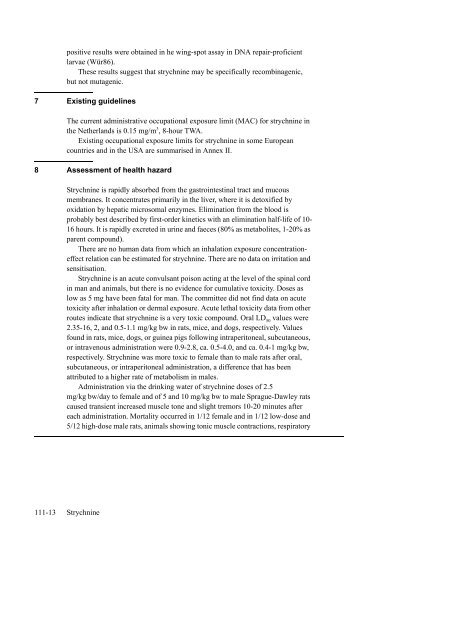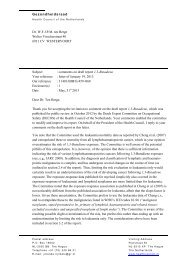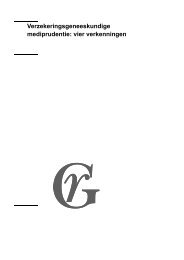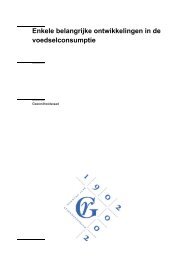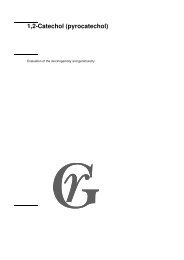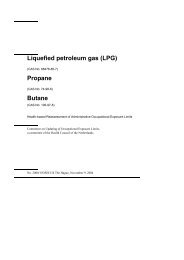Strychnine - Gezondheidsraad
Strychnine - Gezondheidsraad
Strychnine - Gezondheidsraad
You also want an ePaper? Increase the reach of your titles
YUMPU automatically turns print PDFs into web optimized ePapers that Google loves.
positive results were obtained in he wing-spot assay in DNA repair-proficient<br />
larvae (Wür86).<br />
These results suggest that strychnine may be specifically recombinagenic,<br />
but not mutagenic.<br />
7 Existing guidelines<br />
The current administrative occupational exposure limit (MAC) for strychnine in<br />
the Netherlands is 0.15 mg/m 3 , 8-hour TWA.<br />
Existing occupational exposure limits for strychnine in some European<br />
countries and in the USA are summarised in Annex II.<br />
8 Assessment of health hazard<br />
<strong>Strychnine</strong> is rapidly absorbed from the gastrointestinal tract and mucous<br />
membranes. It concentrates primarily in the liver, where it is detoxified by<br />
oxidation by hepatic microsomal enzymes. Elimination from the blood is<br />
probably best described by first-order kinetics with an elimination half-life of 10-<br />
16 hours. It is rapidly excreted in urine and faeces (80% as metabolites, 1-20% as<br />
parent compound).<br />
There are no human data from which an inhalation exposure concentrationeffect<br />
relation can be estimated for strychnine. There are no data on irritation and<br />
sensitisation.<br />
<strong>Strychnine</strong> is an acute convulsant poison acting at the level of the spinal cord<br />
in man and animals, but there is no evidence for cumulative toxicity. Doses as<br />
low as 5 mg have been fatal for man. The committee did not find data on acute<br />
toxicity after inhalation or dermal exposure. Acute lethal toxicity data from other<br />
routes indicate that strychnine is a very toxic compound. Oral LD 50<br />
values were<br />
2.35-16, 2, and 0.5-1.1 mg/kg bw in rats, mice, and dogs, respectively. Values<br />
found in rats, mice, dogs, or guinea pigs following intraperitoneal, subcutaneous,<br />
or intravenous administration were 0.9-2.8, ca. 0.5-4.0, and ca. 0.4-1 mg/kg bw,<br />
respectively. <strong>Strychnine</strong> was more toxic to female than to male rats after oral,<br />
subcutaneous, or intraperitoneal administration, a difference that has been<br />
attributed to a higher rate of metabolism in males.<br />
Administration via the drinking water of strychnine doses of 2.5<br />
mg/kg bw/day to female and of 5 and 10 mg/kg bw to male Sprague-Dawley rats<br />
caused transient increased muscle tone and slight tremors 10-20 minutes after<br />
each administration. Mortality occurred in 1/12 female and in 1/12 low-dose and<br />
5/12 high-dose male rats, animals showing tonic muscle contractions, respiratory<br />
111-13 <strong>Strychnine</strong>


